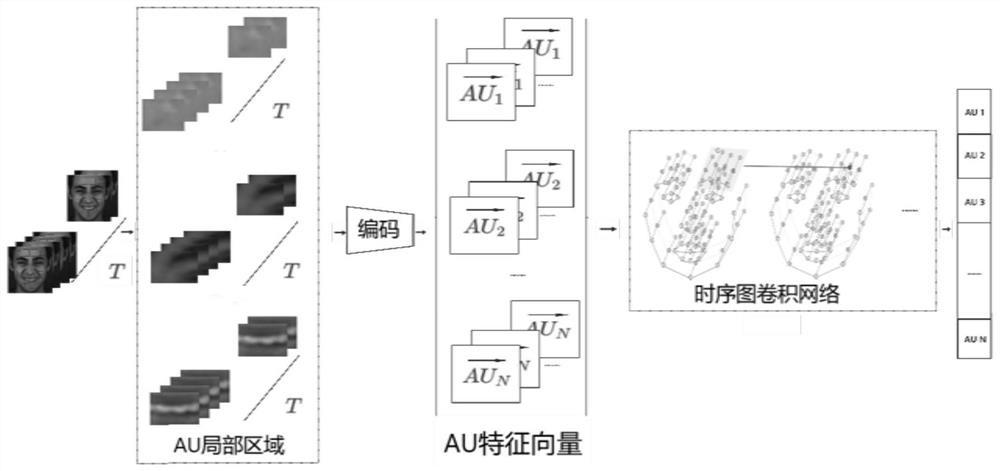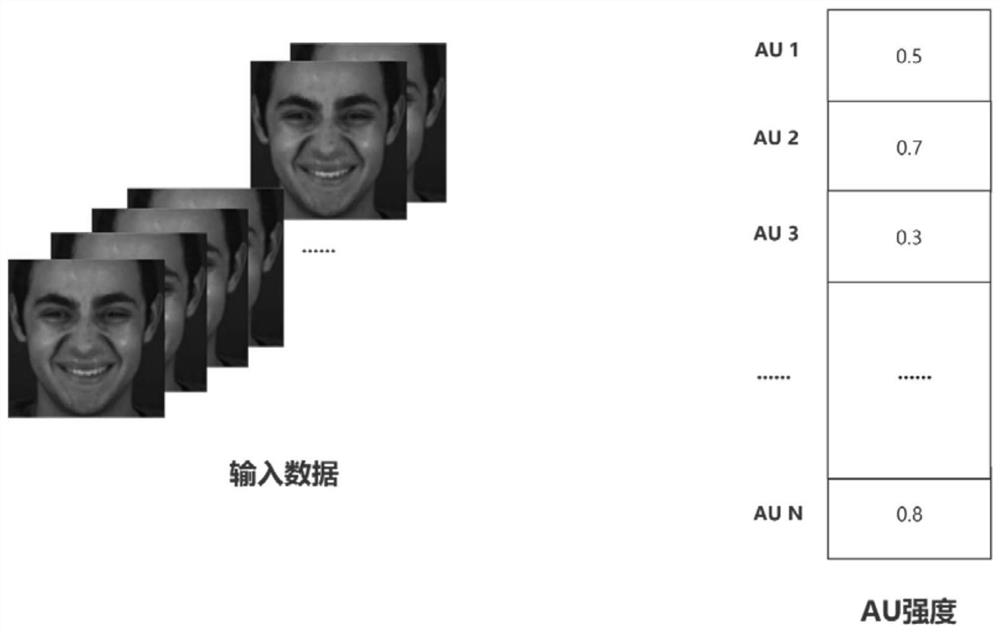Facial expression motion unit identification method based on space-time diagram convolutional network
A technology of convolutional network and motion unit, which is applied in the fields of computer vision, emotional computing, emotion recognition, and human-computer interaction. It can solve problems such as overfitting, small data samples, and data sets that cannot meet the needs of detection. Poor stickiness, the effect of improving accuracy
- Summary
- Abstract
- Description
- Claims
- Application Information
AI Technical Summary
Problems solved by technology
Method used
Image
Examples
Embodiment Construction
[0042] The present invention extracts features from the AU region of the facial motion unit through an autoencoder, then constructs a spatio-temporal relation graph of the AU sequence based on the AU spatio-temporal relation, and finally performs a graph convolution operation on the AU spatio-temporal relation graph using the spatio-temporal graph convolution network model, and uses AU identification is performed by a fully-connected network to detect the occurrence and strength of AUs.
[0043] Concrete steps of the present invention are as follows:
[0044] First, the input image frame sequence is segmented and the AU local region (ROI) in each frame image is extracted. Use autoencoder to extract deep features of facial AU key region (ROI).
[0045] Next, the depth representation vector of the AU extracted in the previous step is used as a node to construct an undirected spatio-temporal relationship graph of the AU sequence. Connect nodes in space and time according to the...
PUM
 Login to View More
Login to View More Abstract
Description
Claims
Application Information
 Login to View More
Login to View More - R&D
- Intellectual Property
- Life Sciences
- Materials
- Tech Scout
- Unparalleled Data Quality
- Higher Quality Content
- 60% Fewer Hallucinations
Browse by: Latest US Patents, China's latest patents, Technical Efficacy Thesaurus, Application Domain, Technology Topic, Popular Technical Reports.
© 2025 PatSnap. All rights reserved.Legal|Privacy policy|Modern Slavery Act Transparency Statement|Sitemap|About US| Contact US: help@patsnap.com



